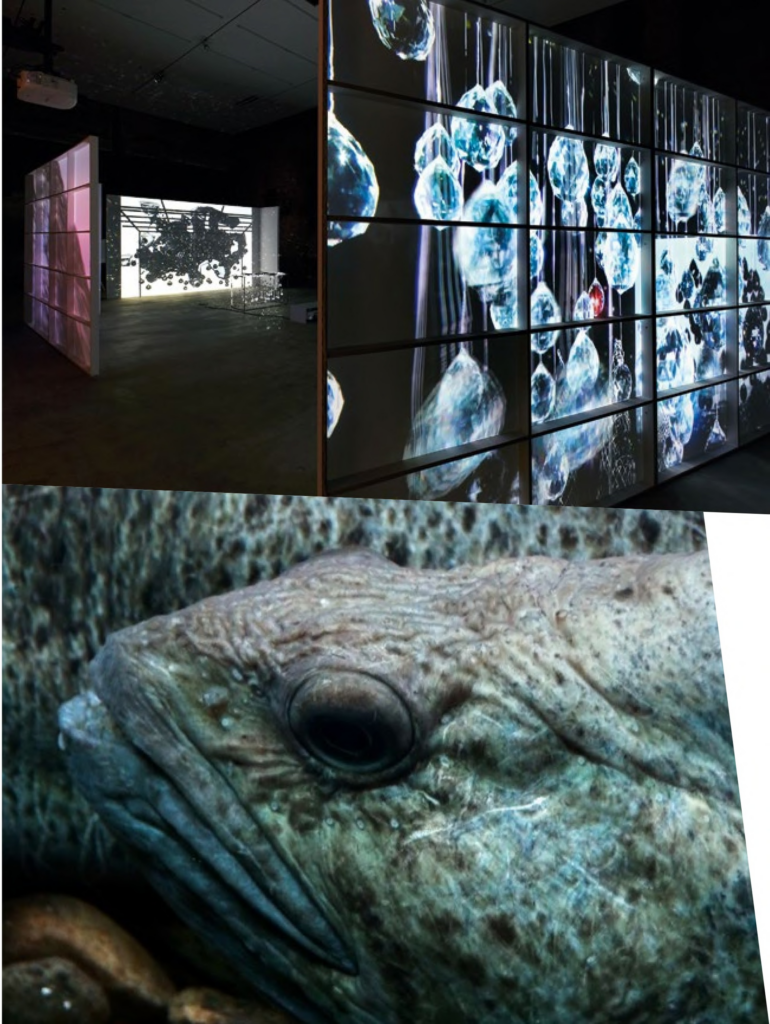JOAN JONAS
She was born in 1936 in New York City, USA, and lives and works between her birthplace and Nova Scotia in Canada
Reanimation
2010/2012/2013

Joan Jonas is a multimedia artist acclaimed for her dreamlike and ever-evolving work emerging from her enduring fascination with myth and ritual. Amid New York City’s burgeoning art scene of the 1960s and 1970s, Jonas came to be known for her radical experimentation with video and performance using live-feed self-portraits to interrogate portrayals of female identity, at a time when women artists were redefining their artistic paths by turning away from traditionally male-dominated mediums such as painting and sculpture. Among her many collaborators—dancers, musicians, storytellers—have been the artist’s canine companions, repeatedly appearing in her work as drawings or impromptu performers. In 2015 Joan Jonas represented the United States at the 56th Venice Biennale.
As with many of her works, Reanimation (2010/2012/2013) has taken different forms over time, first as a performance in collaboration with jazz musician Jason Moran in 2010, and then restaged as an installation for dOCUMENTA 13 in 2012. The work is inspired by a chapter of Under the Glacier, a 1968 novel by Icelandic author and Nobel laureate Halldór Laxness, which tells the story of a young church emissary sent to investigate strange occurrences in a remote glacial village. Jonas’s immersive installation comprises four videos layering ghostly superimpositions of live projections from the original performance, footage of the artist painting on snow or drawing with ice, and an otherworldly Arctic landscape shot on the Lofoten Islands in Norway. The videos are projected onto four large screens forming a mystical and intimate viewing space. Here a delicate sculpture of suspended crystal balls refracts light from the projections and scatters luminous fragments around the darkened space to resemble the celestial landscape of a starry night. The installation is enveloped by a soundtrack that includes passages from Laxness’s imaginative prose, excerpts of Japanese Noh theater plays, traditional songs of the Indigenous Sami people, and Moran’s original compositions. In an idiosyncratic language of performance, Jonas weaves these images, props, sounds, and her own repeating, ritualized actions into a complex tapestry. Through this flow of sensorial associations, Reanimation invokes a nonlinear, expanded sense of time and the miraculous nature of the world we inhabit—in the artist’s words, “the fragility of life in a rapidly changing situation.”
